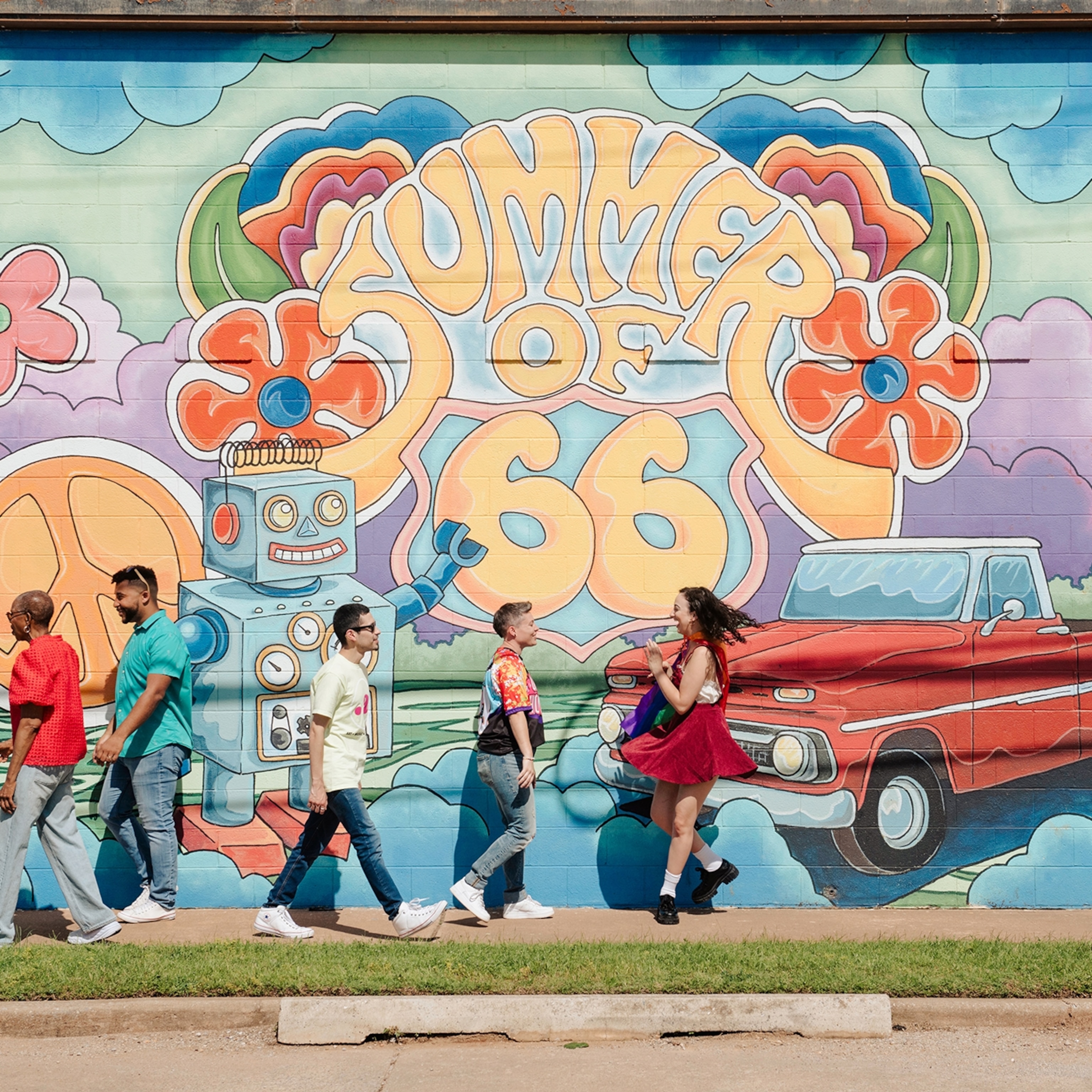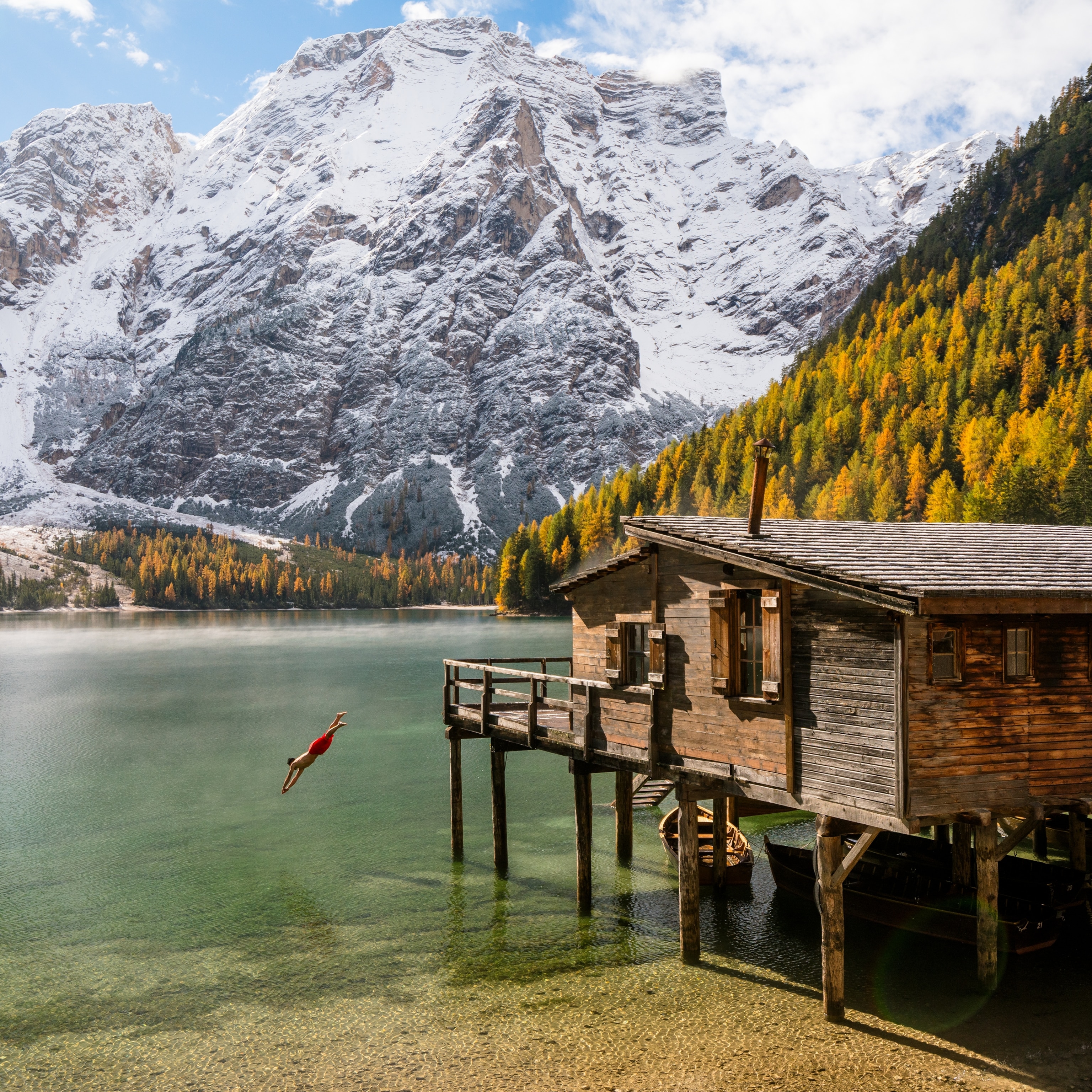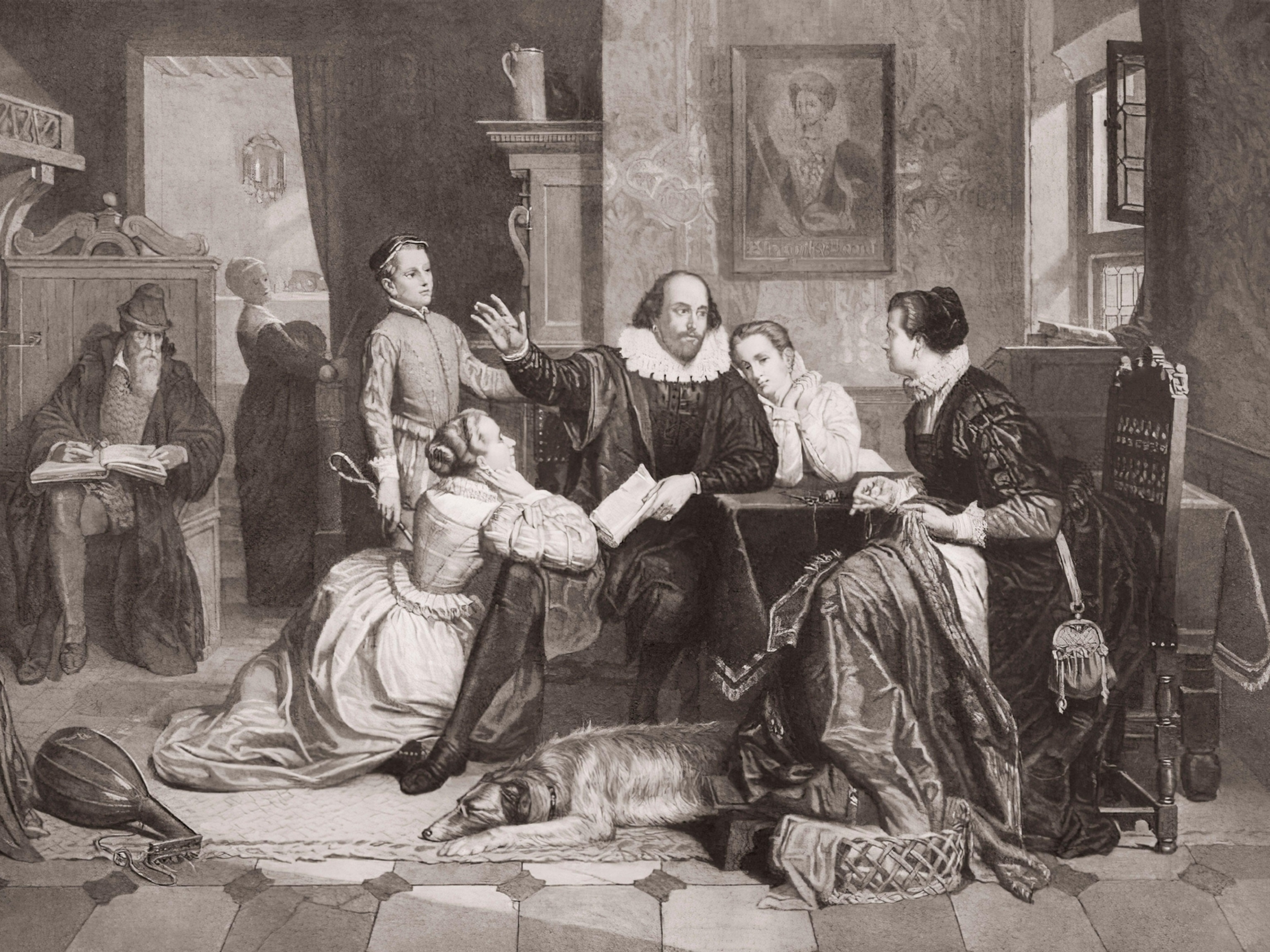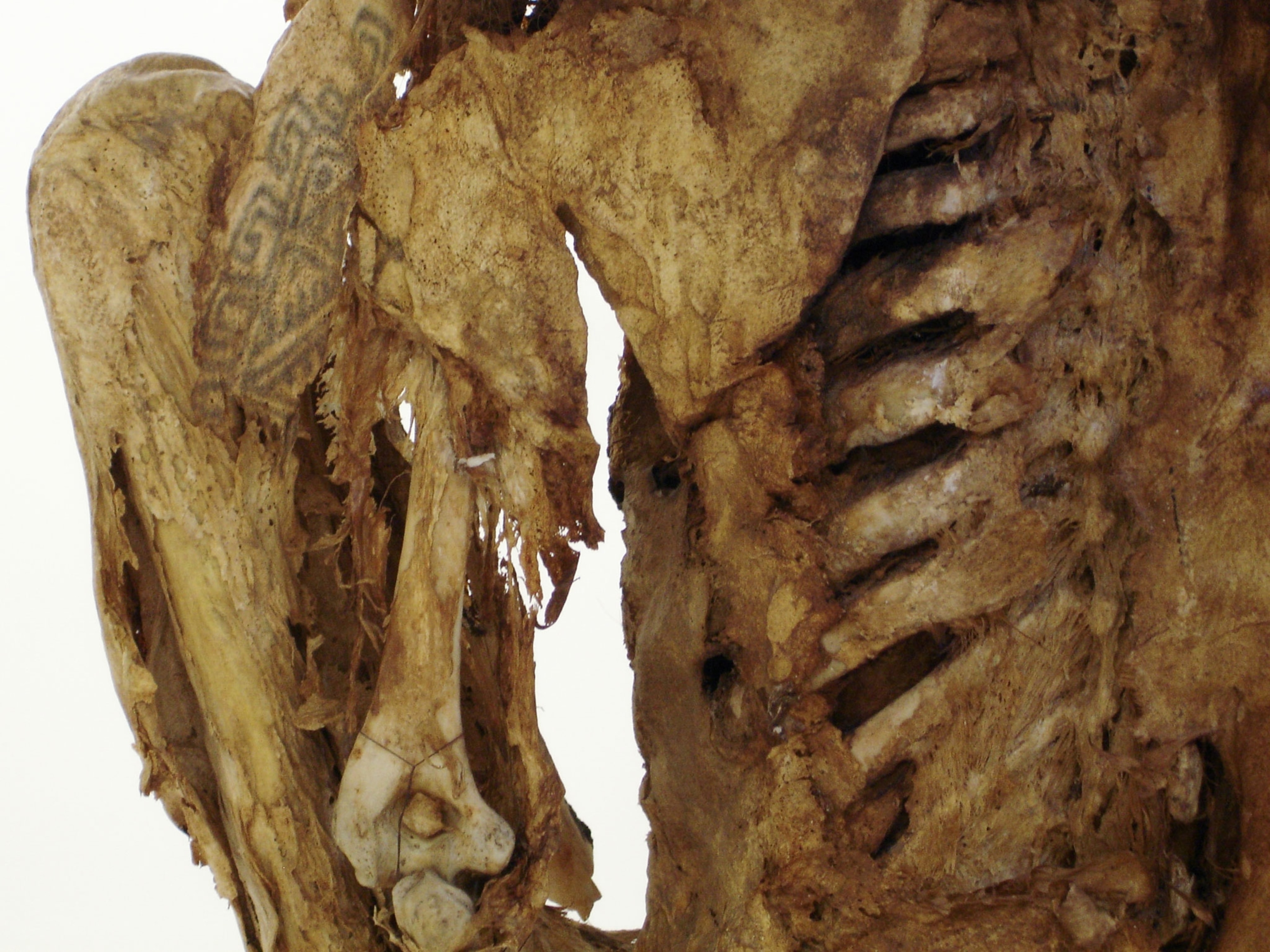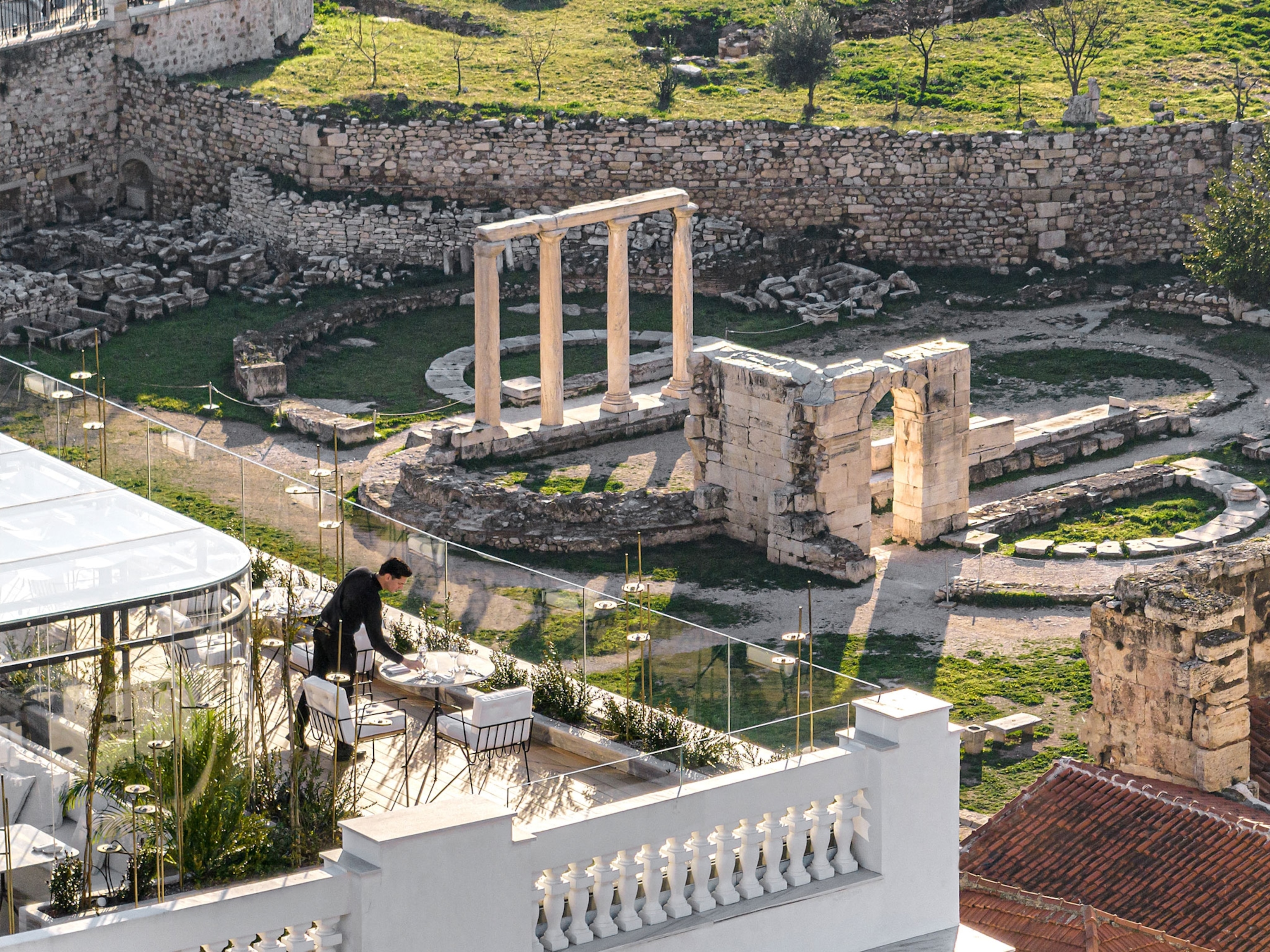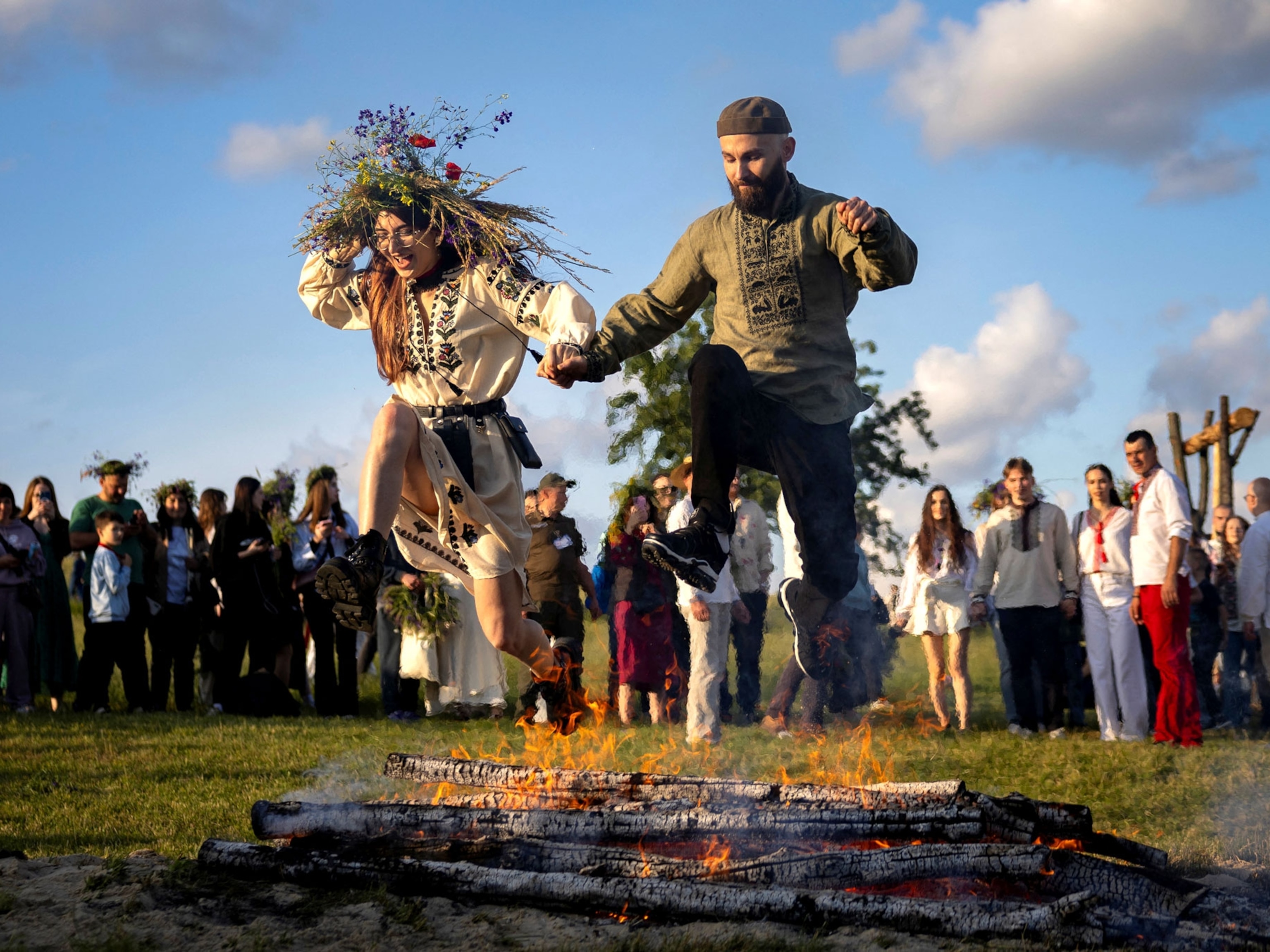Sneak Attacks of Beauty in a Tough Town: Street Art in Oakland, California
In this new series, writers and photographers from around the world reflect on places that hold special meaning for them.
Pen Harshaw said he'd meet me at the concrete landing on the east side of Lake Merritt, across the water from the courthouse. Both of us were on bicycles, because what Pen was going to show me requires negotiating barbed wire fence openings and the narrow spaces between idled train cars and warehouse walls. "Writers," he said. "That's what they call themselves. Not artists. Writers."
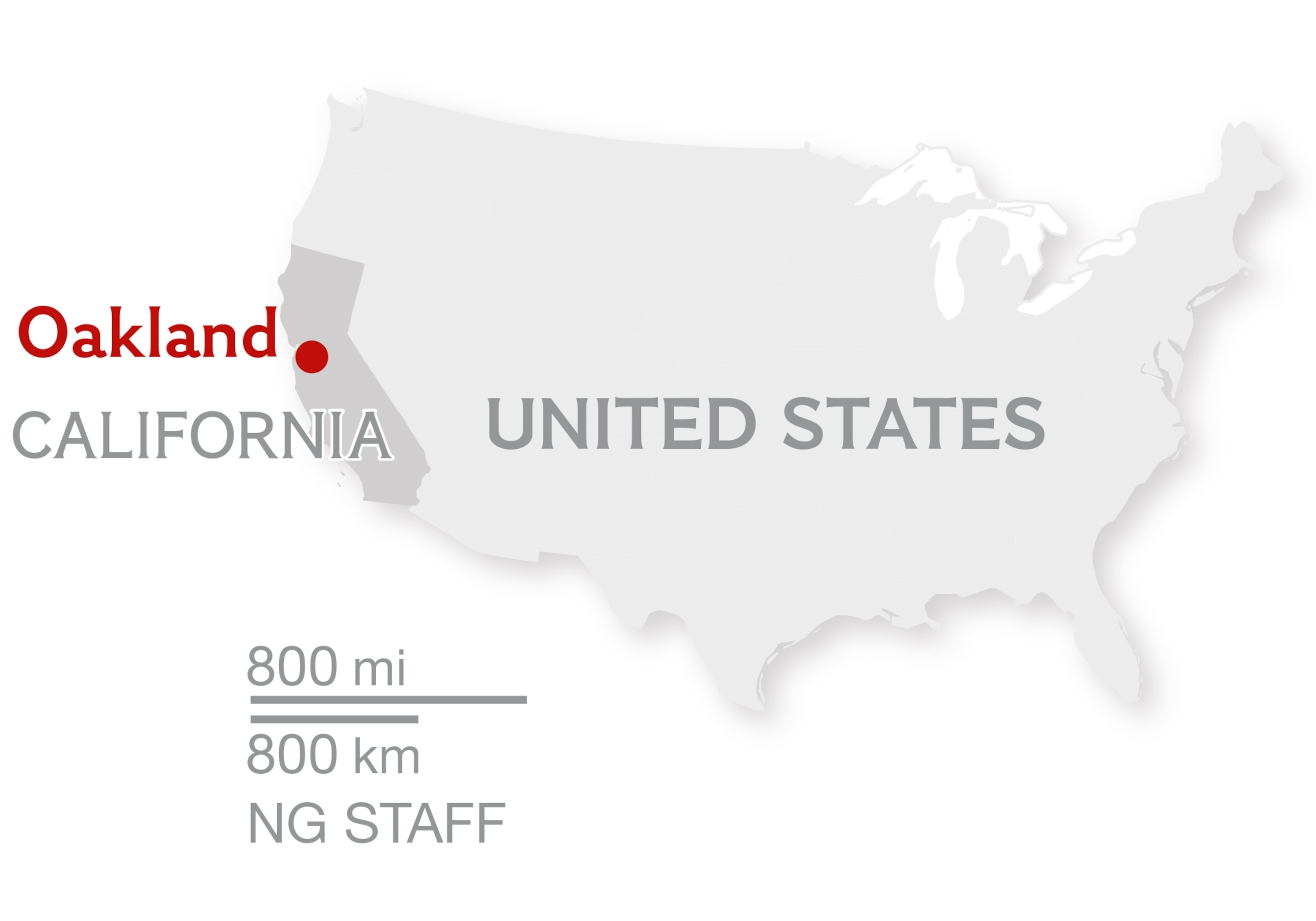
From my house to that end of the lake it's mostly a downhill roll, past the Ethiopian restaurants, the Korean barbecue houses, the fried-chicken-sandwich place that uses ironing boards for sidewalk tables, the Middle Eastern grocery that sells baba ghanoush and grass-fed beef burgers, the old funeral home with its entry sign translated into Vietnamese, and the rehabbed art deco movie palace where I once watched an African-American church diva wind up the annual holiday concert by singing "Rudolph the Red-Nosed Reindeer" in Yiddish, accompanied by a Klezmer band.
That was after the full interfaith gospel choir and the youth chorus that filled the stage with Latino and black and white and Asian and Pacific islander teenagers, all in churchy robes, with voices that made our hair stand on end. I remember the symphony director coming out at one point during that concert, looking as though he was about to keel over from happiness, clasping his hands together and blurting, "People, do we not live in the most wonderful city?"
This is Oakland I'm telling you about—Oakland, California. There are Oaklands all over the United States, it turns out, but ours is the biggest. San Francisco, where I grew up, is on the other side of the bay, visible when the fog lifts. Oakland has half San Francisco's population numbers, more trees, better weather, and houses that don't cost a zillion dollars to buy, though far fewer of those than 30 years ago, when my husband and I found one such house and moved into it. Recently there's been some celebratory Coolest Place in America Outside Brooklyn press about Oakland. The phenomena usually cited are verifiably present (hipsters, rappers, hip-hoppers, indie bands, tech startups, artisanal soul food, artisanal beer, artisanal marijuana strains, etc.), but this is also a city in which murderous thugs with bad aim have on three separate occasions since May wounded small children who happened to be outside at the wrong time. I've seen our annual homicide totals compared, unfavorably, to those of entire European nations. Some years ago, before a family trip, my car was stolen from outside our house while we were loading it up, in the time it took for me to walk indoors for another load.
So I'm not an urban romantic, all right? If you're going to feel ardent about a complicated place, it helps to be willing to look closely in multiple directions at once, or else you're just being silly; I knew that before I met Pen, and I thought it was one of the lessons I was teaching him. He's 27. He has an elegant full name, Pendarvis Lee Andrew Harshaw. He grew up fatherless in one of the Oakland neighborhoods from which the crime statistics are fiercest.
He scholarshipped and worked his way through Howard University and arrived in my fall 2012 class at U.C. Berkeley's journalism school, and this spring, as Pen was finishing his master's degree, I was in the audience that watched the documentary he'd been developing all year. When it was over, I felt both idiotic and elated, the way I did the first time a bird-watcher showed me how to see details I had never realized were in front of me—beak colors, wing shapes, rhythms of flight. I grabbed Pen, in the auditorium, and said: Take me there.
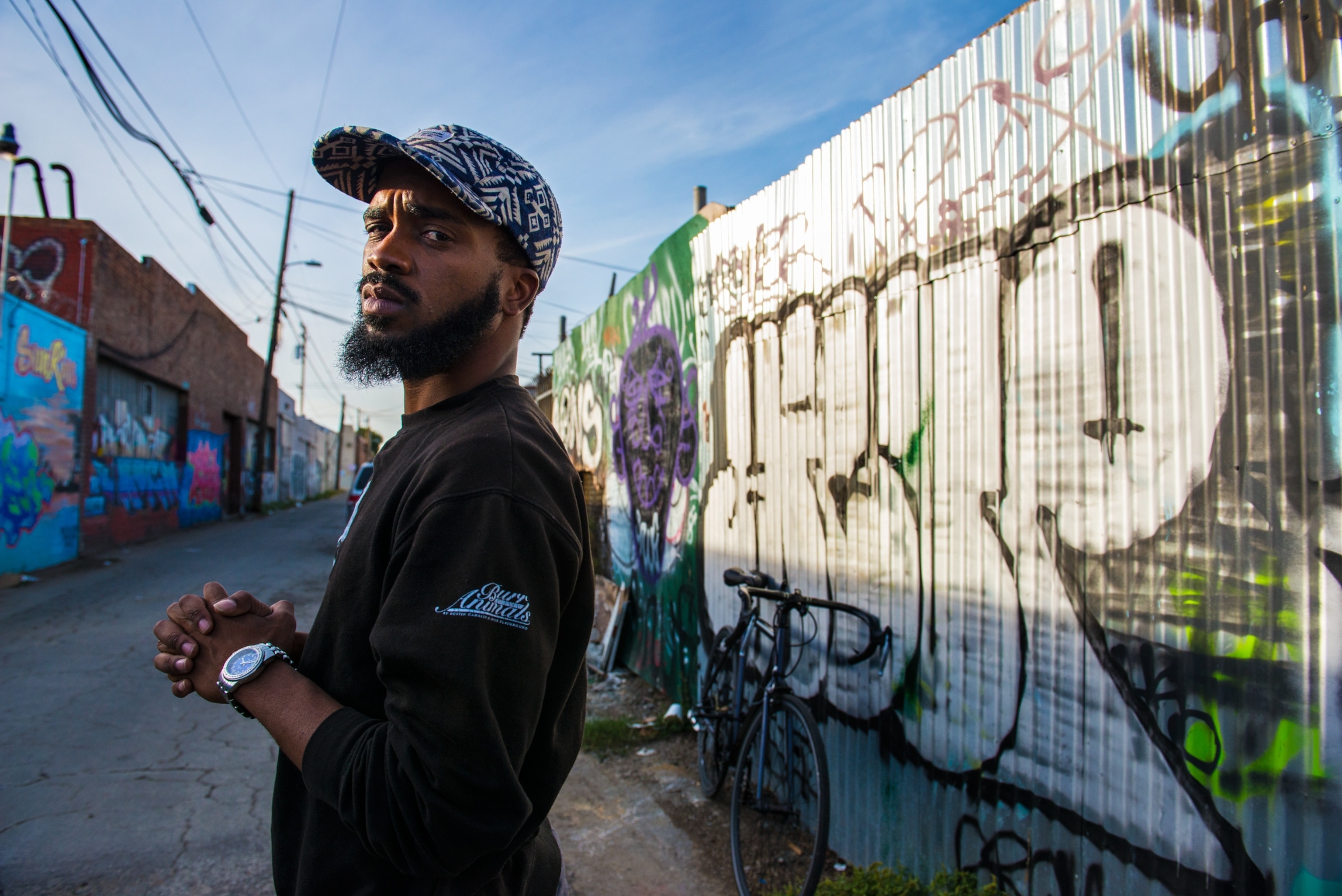
"Happy to," Pen said.
Now he was riding his bike in blue jeans and a bright blue cap, and I followed him down this street and that, bumping over potholes, dodging trucks, until he called "Turn here" over his shoulder, and there wasn't much to turn into, an alley barely wider than a car. Pen stopped. "Here's where we start," he said.
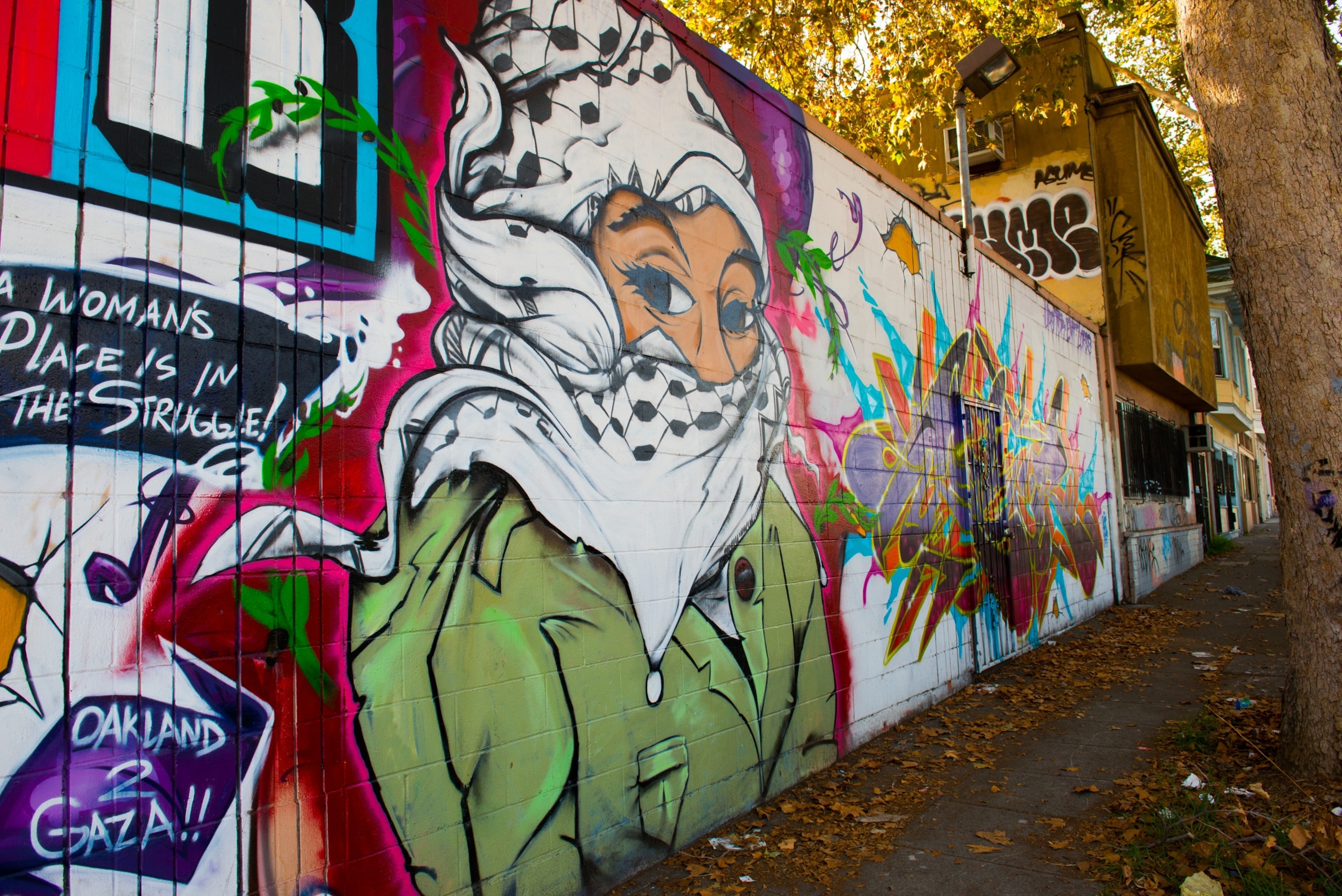
The alley had corrugated tin, barbed wire, weeds, overhead electrical lines, cracked pavement, a few barred street-level windows, and this:
And a massive second version of the hooded woman, her eyes closed, her lashes against her cheeks, her head covering weirdly beautiful in minute black-and-white designs that must have taken hours to get right. And a precise silhouette of the Port of Oakland industrial cranes, which to people who live here look like fantastical giant beasts guarding at the water's edge against a painted sunset sky. A sorrowful white-faced clown. A shimmering race car caught midlunge. Geometric shapes folding three-dimensionally in upon themselves. Words and names ribboned a quarter block long, the multicolored calligraphy so sworled and elaborate that it might have been lifted from an illuminated monastic manuscript.
Pen watched me stare. He put these city blocks into his film, without saying exactly where in Oakland they are. In San Francisco certain street-art-covered alleys have become international visitor attractions, with Yelp reviews and guided walking tours and so on. But around here Oakland plays the tough, messy cousin who might either serenade you or slug you and steal your wallet, you can't be sure from one day to the next. On our streets the act of spray-painting on walls is still mostly renegade and secretive, and Pen's film is about searching out the bereaved colleagues and acolytes of a deceased Oakland street artist—a writer, sorry—named Mike Francisco, who went by the graffiti name "Dream" and was prolific at work of this nature.
"Why 'writers'?" I said.
"Because everything starts with letters," Pen said. "They have to master the lettering first."
Dream was shot to death in 2000, apparently by someone trying to rob him. By now the bulk of his product has been painted over, like that of hundreds of young spray-can wielders before and after him, by exasperated property owners and maintenance workers. A city paint-over guy appears in Pen's film, in fact, patiently rolling white over one scribbled-up wall and remarking that he's probably repainted that very wall 50 times. He has a street name, too: Erase. "It's not gang graffiti," Erase says. "The gangs in Oakland have better things to do."
The reason I know how to spell Tigrinya and Amharic, which are both spoken in Ethiopia, is that I once wrote an article about an Oakland public elementary school in which those were among the 14 native languages the students brought with them from home. Riding alongside Pen all morning, through the alley and down into the train yards where Dream and his spray-paint crew conducted most of their surreptitious work, I began to see what my younger friend set out to explain about the city we have learned how to love: that in Oakland, like so many urban places in which gift, ambition, rage, and frustration are all crammed in together, there's an additional language that lives on outdoor walls. It's coarse. It's defiant. Frequently it flouts property rights, social sensibilities, and the rule of law. It's legible, though, once you start learning its alphabet, and has developed its own internal rules of conduct and a widely understood skill ascension ladder that starts with tagging, as Pen taught me to call it, and rises—sometimes—to art.
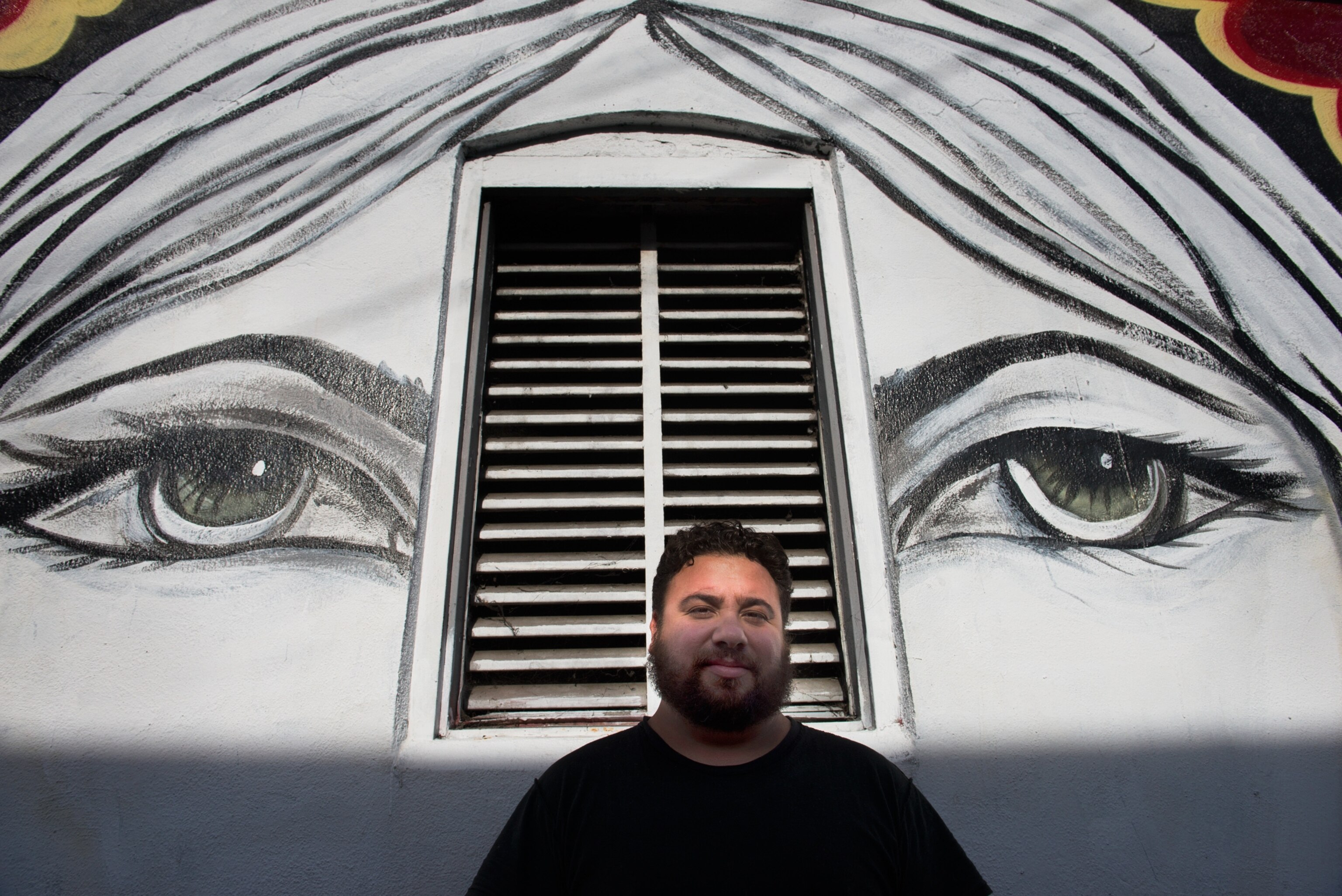
Tagging is graffiti spray-painted hastily, without aesthetic planning. The translation of a tag, graffiti to English, is I was here. Ha! Deal with it. When the letters fatten and take on a hint of character, maybe an extra color, that's no longer a tag; now it's called a throw-up. The translation of a throw-up is I was here a little longer, and I have a little more imagination. When the letters both fatten and deepen, weaving in and out of each other, angling and shadowing and pulsing with color, it's no longer a throw-up; now it's a piece, I was here for quite a while, and I actually care about what I'm creating, and it's very poor protocol to tag or paint a throw-up over someone else's piece. "If you're going to go over somebody, it had better be better than theirs," Pen said. "That's the general rule."
Later I went back by myself to the alley, where a party was under way. Around one alley corner a wrought iron gate opened into a passage between two brick buildings, and people of many ethnicities were standing around outdoors listening to music and drinking beer, and an elaborately tattooed bearded man with long black braids came over to say hello. "Salvador Cortez," he said, shaking my hand. "Also people know me as Chamuco." That's Spanish for devil, not in the Lucifer sense, but in the mischievous sense. "East Oakland, born and raised."
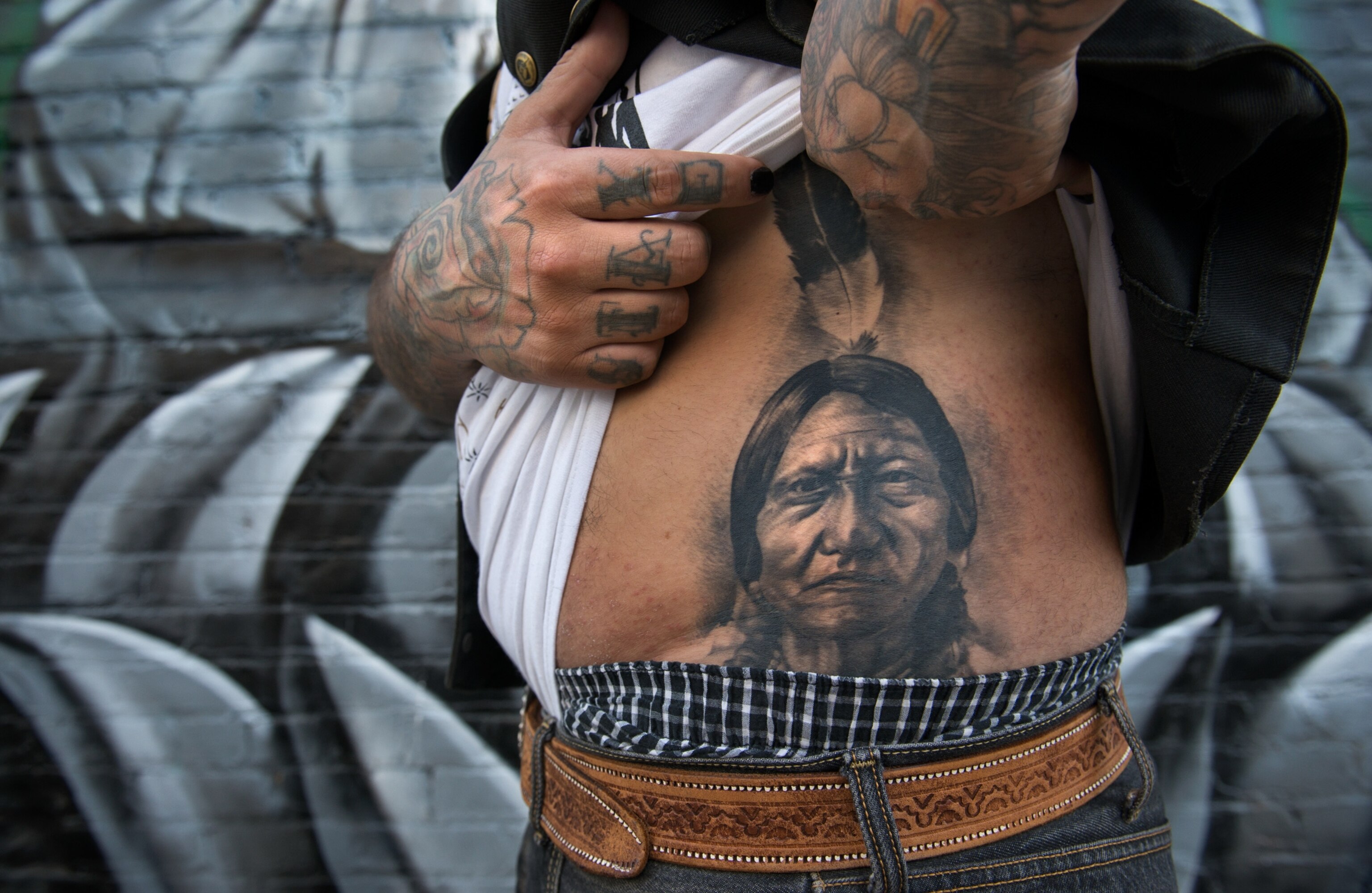
Cortez, who is 32, invited me inside and introduced me to his wife, Amy, and their artist friend Chris Granillo, and all of them told me stories for a while, about how the brick buildings were a brewery before drugs and gangs and prostitutes consumed the neighborhood; and how Salvador and Amy moved in to open a tattoo business and art gallery; and how they used to hear alley noises of johns being serviced or trashed furniture being dumped, so that in the middle of the night they would stick their heads out the window, from the bedroom that looks over the alley, and scream, "PEOPLE LIVE HERE."
In cities like mine this is sort of what we all do, over and over, in the larger sense, and finally the Cortezes and Granillo decided to try using the alley walls for some serious work—a couple of pieces. They commenced with a six-foot-high portrait of the face of Bruce Lee, the martial arts movie actor who died in 1973. (Word has it he once ran a training studio nearby.)
Nobody tagged Bruce Lee. "People started driving by in their cars to get out and take pictures of it," Cortez said. "So we were like, expletive! We should do more." The landlord from whom they were renting the former brewery said he didn't mind. Word got out. People started showing up with paint and ideas. Granillo painted the hooded woman—she's a Zapatista, by the way, a southern Mexican revolutionary in a balaclava. It was Cortez who painted Yoda. "I was going to do, like, more of a Buddhist Yoda," he said. "But we ran out of time and spray paint."
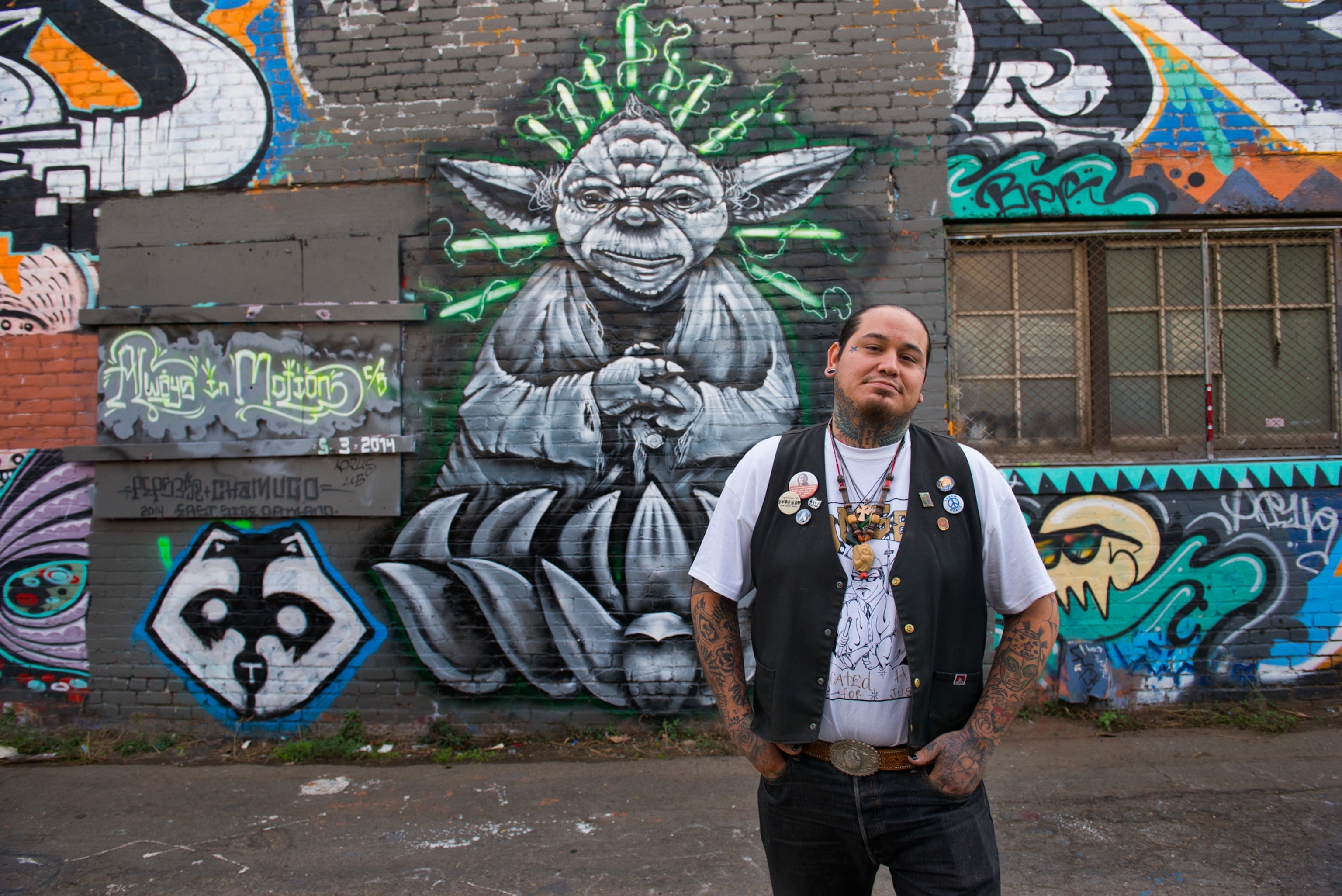
We all regarded each other, uncommonly pleased with the moment: Mediterranean northern California light, inventive new art on the walls around us, Cortez's tattooed arms in repose on the table at which we sat. "This is the Zapatista Virgen de Guadalupe," he said, when I wondered about various of the tattoos. "A coffin. The music signature for 'Take 5,' the Dave Brubeck piece. My sobriety tattoo. A Russian gangster nesting doll. Stay True Lose None." Those last words were spread across his knuckles. "I've lost a lot of friends," he said. "I don't want to lose more."
A block away, on the main street that runs through this part of Oakland, three young women in shorts and high heels were trolling a street corner, waiting for work. In the few days since I'd first been there, someone had dumped a half-burned mattress into the alley, and there were small new piles of empty liquor bottles, and I asked whether it would be all right if I identified the alley. Granillo and the Cortezes said absolutely it was. The alley is showing up now on the Web, in places like the photo site Instagram, where graffiti and street art stay visible internationally long after they've vanished under other people's paint.
So here's the name: Solano Alley, in Oakland. Should you happen to find it, don't dump your garbage while you're passing through. Don't tag other people's work. Don't paint over anything that's better than what you could do. And don't snap a couple of quick cell phone pictures from inside your rolled-up windows before speeding anxiously away, either. Salvador and Amy have seen people do that, locked into their cars as though gawking is acceptable but everything else—this place, these visuals, this language, this story—is too scary even to try to explore. That's just wrong. People live here.
Do you have interesting graffiti in your town? We want to see it. Using #mytown, contribute to the My Town series by submitting your photos to Your Shot, where you can share photos, take part in assignments, lend your voice to stories, and connect with fellow photographers from around the globe.
National Geographic contributing writer Cynthia Gorney teaches at U.C. Berkeley's Graduate School of Journalism and has lived for three decades in Oakland, on a street with a couple of very tall pine trees. She owns a car, but her principal commuting vehicle is an unglamorous-looking black bicycle that as of this writing has never been stolen.
